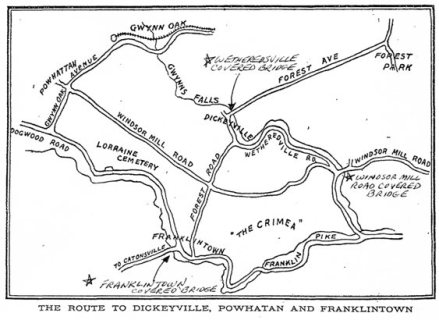 |
 |
| Simon J. Martenet Map of 1865 shows the location of the Franklin Woolen Factory in Wetheredsville. | Driving Tour map of the Wetheredsville/Dickeyville area from the Baltimore Sun article on September 29, 1907. (Added to map are three marks where covered bridges were known to exist.) |